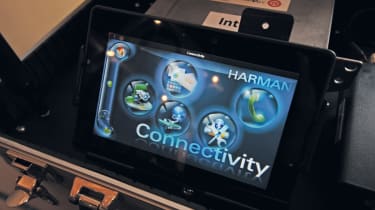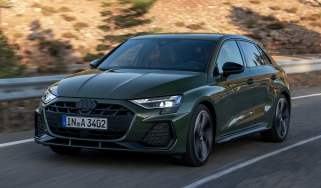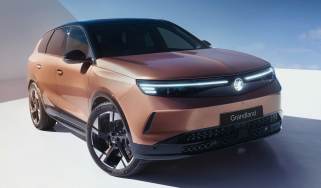In-car Internet
We look at how in-car Internet connectivity is set to transform drivers’ lives – and get a glimpse of how the systems could work
Internet on the move is the next big thing, and in-car entertainment giant Harman has given us a mind-blowing peek at this technology’s future.
We went to Munich to try Harman’s BMW 7 Series-based demonstrator: the Connectivity Car. It’s packed with gadgets, and the tech – set for showrooms in two to three years – takes mobile Internet to the next level.
Munich wasn’t chosen by accident: the city is trialling a Fourth Generation (4G) network, which gives ultra-fast connection speeds. In theory, the 3G network currently used by mobile devices allows connection speeds of up to seven megabits per second (7Mbps). But even with a strong 3G signal, real-world speeds are often a tenth of this – so it’s a struggle to browse the Internet or use real-time navigation mapping.
Yet 4G – also known as Long Term Evolution (LTE) – has hiked connection speeds to 100Mbps, transforming the possibilities.
Harman’s vision is the car, rather than smartphones, being the link to the Internet. This is how the Connectivity Car is set up.
The 7 Series has a 4G Internet connection, but mobile devices – like smartphones and tablets – connect to the car through a Wi-Fi hotspot. So there’s no need for individual connections for every occupant’s phone or tablet, as they all use the car’s stable, high-speed online connection.
But Harman has gone a step further with its Smart Office Client, which synchronises with servers from the likes of Microsoft, Google and Yahoo. So Internet content, E-mails, social media updates and more can be displayed, or read aloud, with no need for a smartphone or tablet.
Even better, all the apps and navigation systems are held on the server side of the system, so they can be updated easily, with owners not even having to visit a dealer. And as they’re held in a browser ‘sandbox’ in the car, they still work with no Web connection.
Harman isn’t allowed to tell us which car makers are planning to take on this new technology, but some will factory-fit it to their latest models very soon.
Even though the system is cutting edge, Harman president of connectivity Manfred Schedl knows the user interface must be simple and intuitive. “Drivers and passengers don’t need to be a network administrator to operate it,” he said. “And our focus is about assisting the driver, not distracting them. It must be safe.”
So what will this allow you to do in the car? Well, back seat passengers can watch a movie. Just stream the latest blockbuster in high definition from the Web. We were staggered how quickly HD films could be downloaded.
Schedl told us: “People don’t accept not being connected any more.” The system can access music on any connected tablet or smartphone in the car, on your home computer or stored on cloud remote servers. And it allows the driver to navigate using Google Earth images.
Yet the possibilities don’t end there for Harman’s system. As we swept past Munich’s famous O2 Tower, we were controlling the car’s stereo from an iPad in the back seat. We selected Lady Gaga from the endless music choices – and Harman connectivity expert Roman Steiger showed us how the system could bring up info on the superstar from Wikipedia with a touch of the screen. From there it could tell us where she was touring, let us buy tickets, automatically enter the date in our electronic diary and prepare the car’s sat-nav to direct us to the venue in time for the show.
And because the car is a mobile client, all this information is synchronised with your office or personal server. Amazing.
Plus, the Connectivity Car’s Near Field Communication (NFC) lets driver and passengers make micropayments at filling stations or drive-in restaurants. NFC also allows personalisation of car functions – so a smartphone could not only be the key to the car, it could also automatically change all the comfort and drive settings to your preferences.
The Harman system promises to be reliable, too. Computer and smartphone users accept the odd reboot is needed, but owners are likely to link problems with this system to the car’s manufacturer – something makers are obviously keen to avoid. As the car is the connectivity hub, it’s more robust.



